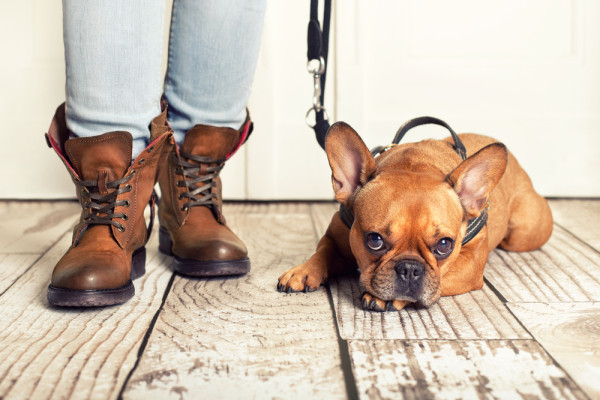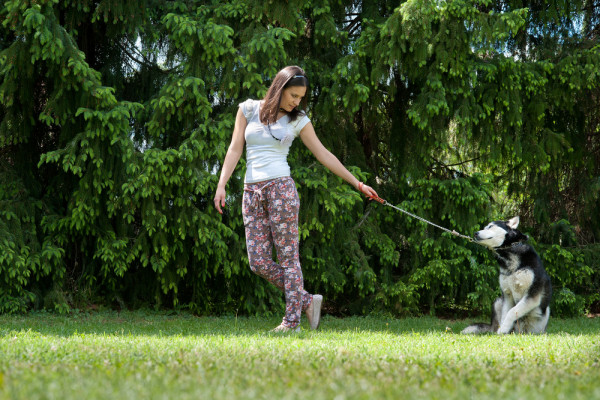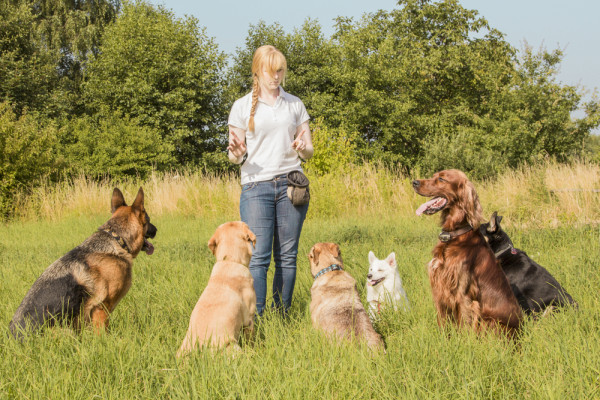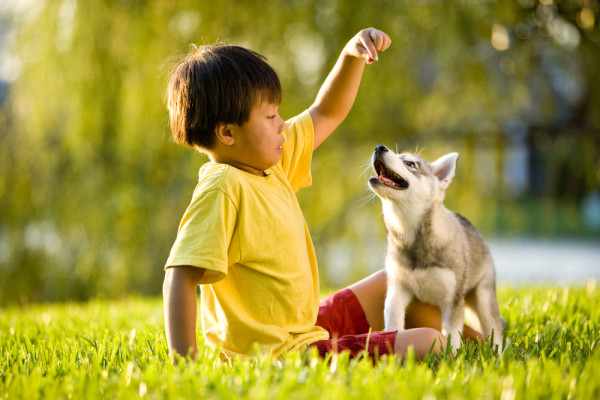Wouldn’t it be great if your dog obeyed your every command?
Studies show the average dog is quite intelligent and understands a vocabulary comparable to a two-year-old human. So if your dog understands what you want him to do, why doesn’t he do it? The answer may be lack of proper motivation.
Dogs, like humans, are motivated to take action for two basic reasons: to earn a reward, or to avoid a punishment. Dog experts have determined that dogs respond best to positive reinforcement training. What that means for you and me is that we now know smacking your dog with a rolled up newspaper or “rubbing his nose in it” when he has an accident in the house just aren’t working- for you or the dog.
Punishing your dog for not obeying is a lot like dropping a two-year-old child off in a foreign country with a family that speaks a different language, yet expecting the child to obey all the family’s rules. The child will catch on to what those rules are eventually, but in the meantime, punishing him for these unknown offenses is just absurd. Rewarding the child with praise, affection, playtime, and snacks would be far more effective in speeding up his learning than spanking him or locking him outside alone when he misbehaves.
Positive reinforcement training requires the use of things your dog likes, to motivate him to perform certain actions. You tell him to “sit”, and when he does you reward him with verbal praise, belly rubs, and a yummy treat.
The next time he hears you say, “Sit” he remembers what happened the last time, and is far more likely to park his rear on the floor in anticipation of all the good things he might get in return. Food and time with you are two of the most important things in your dog’s life, and he’ll usually do quite a bit of work to earn either one. In fact, working dog breeds will usually be happier and more well behaved if given tasks to do- it’s in their nature to serve and stay busy!
Factors that Affect Training
For those of us who parent “stubborn” dogs, don’t worry. Your dog is still trainable, you just need to need to approach him a little differently and understand he’s not stubborn by choice, it’s usually his genetics at work.
The Independent (stubborn) Dog
Let’s look at a Siberian Husky. Her ancestors were bred specifically to be able to think on their feet and make independent decisions. They’re working dogs, and aren’t happy unless they have a purpose to keep them busy. That makes them intelligent, eager to serve, and enthusiastic about pleasing others. That should mean they’re easy to train, right?
But another desirable trait in a working husky is the willingness and ability to disobey when necessary. This willingness to disobey could mean the difference between life and death for the dogs and the humans traveling with them. When a handler tells the husky dog to “mush” across a partially frozen lake that would result in falling through the ice, the husky parks her rear on the ground, refuses to budge, and proceeds to tell the human how stupid his command was for the next five minutes. Silly humans, can’t they SMELL that water flowing under there?
But this ability to disobey when her judgment conflicts with a human’s can also create resistance to training. There are many times a husky pup parent will tell the pup to “leave it” and is rewarded with sixty seconds of ultimate sass and grumbling while she voices her opinion- and huskies have an opinion on everything. But the key to her training is 1) have a superior reward she’s willing to concede the argument over to gain, and 2) earning her trust over time with consistent training. Give in just once and you’re back at square one with an independent dog.
Meeting Your Dog’s Needs
If your dog’s basic needs aren’t met, he won’t be able to focus on training. Before you attempt a training session, make sure he’s been out to potty, isn’t starving (a little hungry is a good motivator, but in the middle of a three day fast isn’t going to work), has plenty of water available, has had some exercise and isn’t “full of energy”, isn’t in pain, and feels safe in his environment. If he feels threatened by the neighbor kids in the yard, the garbage truck on your street, or the territorial Tom cat cleaning himself on your patio, he won’t be able to concentrate on training. When you’re both ready for more advanced training, you can introduce a few distractions to raise the challenge, but in the beginning, make it easy for him to pay attention to only you.
Timing Matters
Timing is everything when training a dog. You wouldn’t dare take a two year old to the grocery store and a movie during his normal nap time or after skipping his supper, would you? Try it and you’re likely to be met with a massive public meltdown. The same concept applies to training your dog.
You’ll also need to keep in mind that things in your dog’s world move pretty fast. He only lives about 12-15 years, so he makes the most of every minute. Leave the house for eight hours and it’s the equivalent of leaving him alone for an entire week- in doggie time. You’ll need to move fast during training. Pay close attention to his every behavior during a training session and the second his rear end touches the floor after a sit command, have that treat ready as a reward. If you wait too long, you miss the opportunity to make a connection for your dog.
Find the Right Treats
Remember that superior reward we talked about that serves as a significant enough motivator to get your dog to overrule his desire to disobey or ignore you? You’ll have to find the perfect treat for your dog in order to get and keep his attention during training.
Find a high quality, healthy treat your dog gets excited over and use that in your training sessions. My dogs’ favorites are TruDog’s TREAT ME treats, and I don’t have to worry about feeding my babies anything unhealthy with TREAT ME treats. The only ingredient is wild caught Alaskan salmon- freeze dried to lock in nutrition and freshness. There isn’t a whole lot my dogs won’t do for a TREAT ME bite of salmon.
Armed with my motivators and prepared to train, I can teach my dogs just about any trick or command I want and expect consistent results. Plus, if I randomly reward my dog for no apparent reason with his favorite treats, he learns to watch me like a hawk and anticipate my commands. Sometimes I don’t even have to tell him to sit or get in the bath. He knows what’s expected of him and he knows he’ll be rewarded well for obeying. His sweet gentle soul brings out the best in me, and I want him with me as often as possible. But living with a Great Dane means he has to learn a few human house rules or we won’t have any furniture left to sit on.
He’s happy, I’m happy, the neighbors are happy, and living life with dogs is just a little bit sweeter when your dog really listens.
This Article Was Brought To You By The Fine Folks At TruDog.com

Resources:
Psychology Today: What are the Limits of Canine Learning?
About The Author:
Lori R Taylor lives in Cincinnati, Ohio and is the founder of TruDog. After losing her beloved Great Dane, Truman, to cancer, Lori was devastated and determined to help dogs live longer. She created the TruDog Nutrition System (TDNS), an amazing suite of veterinarian approved, all natural products, designed to help your dog live longer. This article is dedicated Truman and all the dogs who heal our hearts and make us whole. May your legacy be the light that saves the world.






